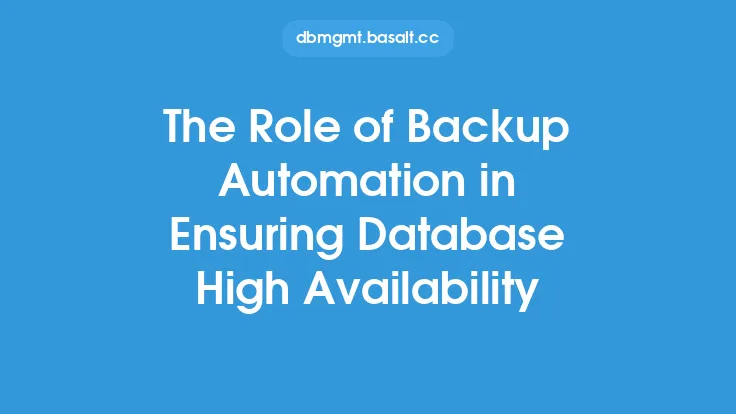Data redundancy is a critical concept in database design that plays a vital role in ensuring data availability. In simple terms, data redundancy refers to the duplication of data across multiple locations, such as servers, disks, or nodes, to ensure that data remains accessible even in the event of a failure or disaster. This duplication of data provides a safeguard against data loss, allowing organizations to quickly recover and restore data in the event of an outage or disaster.
Introduction to Data Redundancy
Data redundancy is often implemented through various techniques, including replication, mirroring, and backup systems. Replication involves duplicating data across multiple servers or nodes, ensuring that data remains available even if one server or node fails. Mirroring, on the other hand, involves creating an exact copy of data on a separate disk or server, providing a real-time backup of data. Backup systems, such as tape or disk backups, provide a historical record of data, allowing organizations to recover data in the event of a disaster or data loss.
Types of Data Redundancy
There are several types of data redundancy, each with its own strengths and weaknesses. Synchronous replication, for example, involves replicating data in real-time, ensuring that data is always up-to-date across all servers or nodes. Asynchronous replication, on the other hand, involves replicating data at regular intervals, such as every hour or every day. Semi-synchronous replication provides a balance between synchronous and asynchronous replication, replicating data in real-time, but allowing for some delay in the event of a failure.
Benefits of Data Redundancy
The benefits of data redundancy are numerous. Firstly, data redundancy provides high availability, ensuring that data remains accessible even in the event of a failure or disaster. This is particularly critical for organizations that rely on data to operate, such as financial institutions, healthcare providers, and e-commerce companies. Data redundancy also provides disaster recovery, allowing organizations to quickly recover and restore data in the event of a disaster. Additionally, data redundancy provides data protection, safeguarding against data loss or corruption due to hardware or software failures.
Implementing Data Redundancy
Implementing data redundancy requires careful planning and consideration. Organizations must first determine the level of redundancy required, based on factors such as data criticality, availability requirements, and budget. They must then select the most appropriate redundancy technique, such as replication, mirroring, or backup systems. Additionally, organizations must ensure that redundant data is properly managed and maintained, including regular backups, testing, and validation.
Data Redundancy and Data Availability
Data redundancy is closely tied to data availability, which refers to the ability of users to access data when needed. Data availability is critical for organizations that rely on data to operate, and data redundancy provides a key safeguard against data loss or unavailability. By duplicating data across multiple locations, organizations can ensure that data remains accessible even in the event of a failure or disaster. This, in turn, ensures high availability, which is critical for maintaining business continuity and minimizing downtime.
Technical Considerations
From a technical perspective, data redundancy involves several key considerations. Firstly, organizations must ensure that redundant data is properly synchronized, to prevent data inconsistencies or conflicts. This may involve implementing techniques such as locking, caching, or versioning, to ensure that data remains consistent across all locations. Additionally, organizations must consider the impact of data redundancy on system performance, including factors such as network bandwidth, storage capacity, and processing power.
Best Practices for Data Redundancy
To ensure effective data redundancy, organizations should follow several best practices. Firstly, they should implement a comprehensive data redundancy strategy, based on a thorough analysis of data criticality, availability requirements, and budget. They should also select the most appropriate redundancy technique, based on factors such as data volume, complexity, and performance requirements. Additionally, organizations should ensure that redundant data is properly managed and maintained, including regular backups, testing, and validation. Finally, they should continuously monitor and evaluate their data redundancy strategy, to ensure that it remains effective and aligned with business requirements.
Conclusion
In conclusion, data redundancy plays a critical role in ensuring data availability, providing a safeguard against data loss or unavailability. By duplicating data across multiple locations, organizations can ensure that data remains accessible even in the event of a failure or disaster. While implementing data redundancy requires careful planning and consideration, the benefits are numerous, including high availability, disaster recovery, and data protection. By following best practices and considering technical factors, organizations can ensure effective data redundancy, maintaining business continuity and minimizing downtime.





